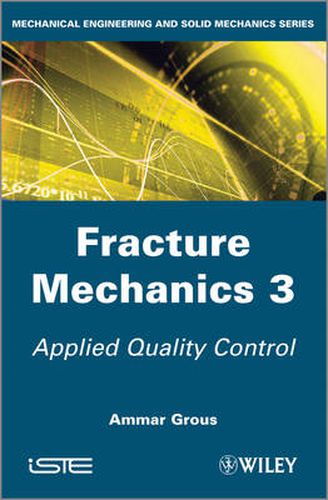Readings Newsletter
Become a Readings Member to make your shopping experience even easier.
Sign in or sign up for free!
You’re not far away from qualifying for FREE standard shipping within Australia
You’ve qualified for FREE standard shipping within Australia
The cart is loading…






This third book of a 3-volume set on Fracture Mechanics adds a pragmatic and supportive character to the previous volumes by focusing on case studies using corrected exercises that teachers, students or engineers will find extremely useful. Due to the wide themes approached in this series, it can also be used to organize work in this field in a new way, as well as in the maintenance of industrial plants. Several cases of sampling plans and their applications in industry are presented, as well as several solved case studies on the main indicators of capability according to ISO/TS 16949, ISO 8258 and FORD. This book distinguishes itself from other works in the field through its originality in presenting an educational approach which aims at helping practitioners both in academia and industry. It is intended for technicians, engineers, designers, students, and teachers working in the fields of engineering and vocational education. The main objective of the author is to provide an assessment of indicators of quality and reliability to aid in decision-making. To this end, an intuitive and practical approach, based on mathematical rigor, is recommended.
$9.00 standard shipping within Australia
FREE standard shipping within Australia for orders over $100.00
Express & International shipping calculated at checkout
This third book of a 3-volume set on Fracture Mechanics adds a pragmatic and supportive character to the previous volumes by focusing on case studies using corrected exercises that teachers, students or engineers will find extremely useful. Due to the wide themes approached in this series, it can also be used to organize work in this field in a new way, as well as in the maintenance of industrial plants. Several cases of sampling plans and their applications in industry are presented, as well as several solved case studies on the main indicators of capability according to ISO/TS 16949, ISO 8258 and FORD. This book distinguishes itself from other works in the field through its originality in presenting an educational approach which aims at helping practitioners both in academia and industry. It is intended for technicians, engineers, designers, students, and teachers working in the fields of engineering and vocational education. The main objective of the author is to provide an assessment of indicators of quality and reliability to aid in decision-making. To this end, an intuitive and practical approach, based on mathematical rigor, is recommended.